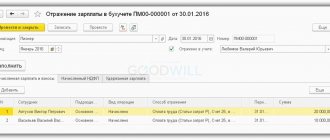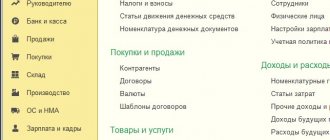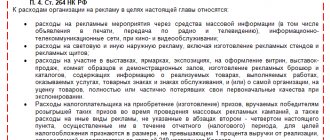To produce any type of product, resources are required - raw materials, semi-finished products, fuel. Materials are purchased at the expense of the organization, received, put into production, where they in one way or another participate in the creation of goods for sale and subsequent profit for the manufacturer. Materials are a significant expense item when calculating product costs. The manufacturer independently calculates the norms for writing off materials for the cost of goods, depending on the technical conditions approved at the enterprise, and prescribes an algorithm for accounting and writing off materials in the accounting policy. The economic department at the enterprise prepares cost estimates for the manufacture of finished products, indicating in them the quantity and cost of materials necessary for the manufacture of products. When purchasing materials, the manufacturer brings them to the warehouse, and the storekeeper is responsible for the safety of the materials in the warehouse. Warehouse premises must be equipped in such a way as to eliminate the risk of theft, damage or loss of materials as a result of technical problems or natural disasters. At the request of the manager, raw materials are supplied to the workshops, the head of the production site monitors the consumption of resources, preventing excess consumption of materials at work sites. The accountant takes into account the purchase of materials, their movement to the production site and the write-off of materials according to expense items, which have different effects on the tax base. The law does not provide for limits on the write-off of materials, since this depends on the specifics of each specific production, but the Ministry of Finance recommends that manufacturers confirm the actual consumption of materials with calculation data. A production site is a complex mechanism, departments and divisions interact here, and a large number of people work here. And there are cases when, due to the fault of the human factor, materials have to be written off in excess of norms as a result of theft, intentional or accidental damage. Nature itself makes adjustments to the write-off of materials and even products already ready for shipment. As a result of emergencies caused by uncontrollable natural disasters, warehouses suffer from fires and floods. As a result, the manufacturer is faced with the problem of writing off materials that were not involved in production, but became part of the company's costs. If you write off the cost of materials as expenses, income tax will decrease, and this will be of interest to the tax inspector. How to write off materials without reducing profits? Does writing off materials affect the loss? How to confirm the write-off of materials for income tax purposes, so as not to violate the law and not turn out to be an unprofitable enterprise? Let's look at how specific cases of writing off materials and finished products reduce income tax.
Rules for writing off materials in accounting with industry nuances
The Russian Federation has a huge number of enterprises from small businesses to large holdings. And a significant number of production and non-production areas. It is noteworthy that virtually every industry has its own small nuances that slightly change the general procedure. This means that the exclusion of objects from the list will be stored on the basis of different principles. Now we will focus on this aspect. But it is worth understanding that there are thousands of spheres in the country. Therefore, in our review we clearly do not need to divide them into the narrowest parts and go into deep specialization. We will go through the most broad and in-demand areas. Let's figure out how to properly write off materials in various industries.
Construction
The main nuance is considered to be the fact that a significant number of different resources are involved in the processes. Such as sand, cement, gravel, brick, cinder block, aerated concrete, crushed stone. The list goes on for a long time. As a result, accurate accounting must be maintained at all times. After all, calculations are not carried out on a monthly cycle. This means that you will have to take inventory. And based on the identified expenses, exclude resources from the general list in connection with the number of units spent (cubic meters, kilograms, tons, pieces).
There is one more aspect that distinguishes this type of write-off of materials in accounting and tax accounting, paperwork. You will need an unexpectedly large package of papers. More specifically:
- Comparison of the specified standard resource consumption and the actual one. And in the vast majority of cases there will be a difference.
- Estimates. There are two types of techniques used. The first is by event or its duration. And the second - specifically for the object, after its delivery to the customer or contractor.
- Reports from local responsible persons. Often this means documents submitted by foremen or a single package that is compiled by the head of the entire site, based on cumulative reports.
- Standards set by management at the facility. That is, a certain resource consumption that is regulated on the site.
- Object logs.
The list, as you can see, is quite massive. And this is perhaps the central feature of the entire sphere. Indeed, during construction, when consumable resources are often simply piled up on the site (sand, crushed stone), it is very important to conduct a complete analysis of product care. Otherwise, uncontrollable shortages will constantly appear.
Agriculture
There are also plenty of documentary reports in this area. Among them:
- Act of consumption of planting seeds.
- Feed list.
- Livestock disposal act.
And what’s noteworthy is that in the industry, for every unaccounted item, an exact justification is required. If an animal died, then it is necessary to understand the reasons, and if it was a disease, then an accurate diagnosis should be made, a veterinarian should be involved, and the threat of an epidemic should be analyzed. If this is some kind of injury, it is required to give a clear definition under what circumstances it was received. Determining the presence of the culprit. When this is an oversight of an employee, or his negligent attitude, then the expense is indicated in the form of debt of a particular employee or deduction of his bonuses and wages. That is, how materials are written off in accounting in the agricultural sector is a complex issue. And it is entirely based on rational spending.
Reasons for leaving
Disposal of intangible assets listed in the organization may occur for the following reasons:
- expiration of a certificate, patent or other documents that confirm the company’s right to use intangible assets;
- unsuitability of the asset for further use;
- transfer of an intangible asset to the authorized capital of other business entities;
- gratuitous transfer of intangible assets;
- sale of these assets.
Note 1
In accordance with the 22nd paragraph of Accounting Regulation 14/2000, the value of intangible assets that are no longer used for the purposes of producing products, providing services, performing work or to meet the management needs of the organization is subject to write-off.
In parallel with the write-off of the residual value of intangible assets, the amount of accumulated depreciation is also subject to write-off, if this amount was previously reflected in accounting in the accounting account $05$ “Depreciation of intangible assets.”
Can not understand anything?
Try asking your teachers for help
Income and expenses received as a result of writing off intangible assets:
- reflected in the accounting records of the organization in the reporting period to which they relate;
- are included in the financial results of the organization.
The instructions for using the Chart of Accounts indicate that when writing off intangible assets, their value should be reduced by the amount of depreciation charges accrued during the period of operation, if depreciation was recorded on account $05$ “Depreciation of intangible assets.” This is reflected in accounting by the following entry:
- Debit $05$ “Amortization of intangible assets”
- Credit $04$ “Intangible assets”
The residual value of the disposed intangible assets is written off using the following entry:
- Debit $91-2$ “Other expenses”
- Credit $04$ “Intangible assets”
The balance of the $91$ “Other income and expenses” account is calculated every month by comparing debit and credit turnover. Then $91-9$ is written off from the subaccount to the $99$ “Profit and Loss” account.
Valuation of unusable resources
Of course, such a situation is not at all uncommon. In no production facility is there a 100% guarantee that human errors or machine malfunctions will not lead to waste. And here two factors become important. The first is whether a particular employee or group of employees was to blame for such a result. And also whether the indicated loss falls within the normal limit or is already beyond it.
If all losses are within acceptable limits, then even if someone is at fault, the account will be production. But it will become personal if the guilt of the employees is obvious, and the expense has gone beyond the regulated norm.
Natural loss and excess technological losses
Technologists at the enterprise develop technologies for processing materials and monitor compliance with technological standards approved at the enterprise. It is important to distinguish between the concepts of technological losses and natural loss. If, when losses occur, the physicochemical properties of the material are preserved, then these are technological losses; if they change, this is a natural loss. Irreversible losses that an enterprise has incurred due to natural loss should not exceed the indicators approved by the Government of the Russian Federation. Where can I get the norms of natural loss? For this purpose, the Government of the Russian Federation has approved special reference books, which indicate all the indicators valid for each industry. For example, when drying wood in a drying chamber, the manufacturer sets the rate of drying of the board, which is then used at the production site. Shrinkage is a natural loss, since during the drying process of wood in the drying chamber, water evaporates. However, during the next delivery of raw boards, the supplier made a mistake with the thickness of the blanks, and the percentage of shrinkage increased compared to the approved norm, which led to additional costs, since the yield of dry boards was less. We are talking about natural loss above the norm. Natural loss in excess of the norm is an enterprise expense, but is not written off as expenses that reduce income tax. But the manufacturer can take into account excess technological losses, which arise in addition to the standard technology costs, when taking into account the costs of production. For example, the remains of concrete on the walls of a concrete mixer are technological losses. And they could have turned out beyond the norm due to the use of low-quality cement when preparing the solution. The Russian Ministry of Finance does not advise writing off such excess losses as expenses, since writing off materials affects income tax - it increases these same expenses and reduces the tax base. After all, the manufacturer himself set the raw material consumption standards, and in such situations he exceeds his own calculations! But, on the other hand, if there is, for example, an act on the fact of an increase in the consumption of raw materials above the norm and justification for the legality of writing off such an additional expense, the enterprise can prove its case in court if the tax authorities consider such a write-off to be unlawful. Income tax is reduced by writing off the amount of excess technological losses, and natural loss in excess of the norm is not accepted to reduce the tax base.
How materials are written off in accounting, drawing up an order and a sample
The first stage of the procedure is the order. It is authorized to be issued by the director, manager, or the person replacing him and acting. The first point of the order is the creation of a commission. In principle, we understand that the main task will be to identify shortcomings. This means that an inventory will be needed. It is clear that even for a routine inspection it is always necessary to appoint a full commission. Where there will be both representatives of the accounting department and responsible persons, for example, a storekeeper or someone who receives products and is personally responsible for its safety.
The question often arises of how to write off consumables in production that are not available, and whether it is possible to immediately proceed to document processing. That’s the simple answer; in fact, this procedure should always be preceded by an inventory. And the initiative that appears in the form of an order has a standard or atypical version. The first option is when the work regulations are already assigned in advance in the form of a separate document. And the second - in cases where the order itself contains the entire regulation. This is an inconvenient form, so often everyone uses the first one.
To make the process of inventory, checks, and exclusion of a resource from the list of available ones easier, you will need software of the appropriate level. And the Cleverence software can help with this issue. This:
- Simplifying the inventory procedure, you only need one smartphone.
- Combining reporting, write-offs and inventory itself into a single system, which is again controlled from one device. Significant savings of time and effort.
- The ability to install both packaged software and individual software developed specifically for the needs and specifics of a particular company.
- Mobile applications that integrate into the general reporting system, for example, Bitrix.
- Solutions in accordance with all the latest amendments to Russian legislation.
- Current support. If the law changes, applications immediately adapt to it through updates.
Now let's figure out what should always be in a standard order. Without which points it simply will not be such:
- Full name of the enterprise.
- Date and serial number of a specific order.
- The purpose of the enterprise.
- Composition of the commission.
- Manager's signature.
Loss of materials due to emergency
Tax authorities recognize floods, hurricanes and other natural disasters that occurred through no human fault as an emergency or accident. If, as a result of an emergency, materials belonging to the organization were completely or partially destroyed, it has the right to write off losses as an expense item that reduces profit. Since the write-off of materials affects income tax, to prove to the tax authorities that the write-off was legal, the company’s accountant is required to submit a certificate from a service that is authorized to record such incidents (for example, the meteorological service or the Ministry of Emergency Situations) to confirm the fact of the emergency. Next, a commission created in the organization conducts an inventory and records the losses caused by the disaster, which are then written off. And if the damage is caused by a broken water pipe, how can you write off the materials at a loss? The organization will not write off such losses in the full cost of the loss as expenses that reduce the tax base, since the damage was caused to the enterprise due to the dishonest performance of official duties by the Company’s employees. Write-off as income tax expenses of losses (pipe breakage, for example) incurred by an organization in connection with utility accidents is formalized in parts: only losses within the limits of natural loss norms can be included in the tax base; the rest of the damage can be compensated by the organization at the expense of the person determined by the culprit persons in emergency situations. A significant factor for the inspector to recognize the losses as legitimate will be how to confirm the write-off of materials during flooding. For income tax purposes, confirmation of the fact of the accident will be required, and these are: a certificate from the management company servicing the building in which the accident occurred, as well as certificates from the services that eliminated the accident (for example, the medical service). It is important to take an inventory of the affected materials and document the damage. Income taxes are reduced by writing off the value of materials destroyed as a result of natural disasters. Expenses in excess of the norms of natural loss caused to the owner of materials as a result of utility accidents are not accepted to reduce the tax base.
With proper paperwork, you can reduce income tax by writing off materials, inventory, and finished products that can no longer be used by the owner to generate income.
The procedure for decommissioning materials, postings and documents
This procedure is a rigorous process. Order, inspection, reporting. And the last point often raises a lot of questions. And in vain, because this is a common operation with its own nuances.
The first of them is that the set of inventories is credited, that is, 10. In all cases, no matter what part of the operation is involved. But expense accounts are debited by their number.
We get this form:
| Debit part | Credit part (always identical number) | Explanations |
| 20 | 10 | Cost write-off in favor of main production |
| 23 | 10 | Analysis and assessment of resource for auxiliary production processes |
| 94 | 10 | Write-off in case of loss. This includes damage, theft, exceeding the service life, initial defects, breakdown during the production process and similar |
| 99 | 10 | This category includes resources damaged by natural disasters. |
| 91.2 | 10 | All products that were sold under a gratuitous contract. That is, often gifts are for marketing purposes or as a result of charity events |
Features of accounting for shortages and losses
When reflecting shortages and damage, a number of rules must be taken into account.
Reflecting shortages
Shortages can only be recorded when they are discovered:
- when carrying out inventory;
- upon receipt of objects in volumes limited by the supply agreement.
On the DT account, the shortage is recorded in the following amounts:
- Real cost if the values cannot be restored or do not exist at all.
- Residual value, if the question concerns fixed assets that are out of order or missing.
- Real losses if partial damage occurs.
That is, the accounting amount is determined depending on the specific circumstances.
Write-off
The write-off is carried out on CT account 94. In the process, they are included in the cost structure.
Act of write-off of inventories
This is the only way to exclude inventories from the list of active ones when stored in warehouses. It is noteworthy that since 2015, this, in principle, allows the use of any calculation and analysis option: by piece cost or by total cost. In this case, a document is always drawn up in form 0504230.
It consists of two parts. The header contains basic information, order number, date, composition of the commission, full name. leader. The main part, in the form of a table, provides information on the actual loss of inventories. Contains graphs of expenses expected according to the norm, the reasons for such an outcome. In fact, this act is the only legal way to properly write off materials from the warehouse.
Do you want to implement “Store 15”? Get all the necessary information from a specialist.
Thank you!
Thank you, your application has been accepted.
What to do if there is a balance
In principle, it is permissible to create a separate sub-account where all excesses are indicated. But this is an optional procedure. Just a way to make your work easier and make your accounting more transparent. But the aspect has nothing to do with the issue under discussion. Since it is strictly prohibited to enter this information into act 0504230, even with reverse values.
Let's sum it up
In fact, the write-off of inventory and materials in tax accounting and accounting has no differences. If we are talking about white accounting, which does not try to mislead the competent authorities. And it is worth remembering that although the law does not put forward actual rules on the procedure, and a lot remains at the discretion of the manager, the final reporting will be significant documents for the Federal Tax Service. Which they can check at any time. Therefore, it is worth approaching the procedure with all responsibility. At the same time, it is also undesirable to refuse such events or minimize them. Otherwise, accounting will turn into a tangled mess, and expenses will “mysteriously” increase.
Number of impressions: 4231
Materials after dismantling
New technologies and the development of the machine tool industry encourage manufacturers to constantly modernize production, and large production facilities continue to dismantle obsolete equipment. As a result of dismantling, dismantled spare parts of fixed assets that have been disassembled appear, as well as materials that do not belong to fixed assets. If the manufacturer does not want to recycle anything, since they can still be used, the company’s accountant sends spare parts and other materials. Then it takes them into account as non-operating income and writes off the full cost of dismantled items in tax expenses. The cost of materials and spare parts during capitalization and write-off remains unchanged. For an enterprise, income tax in this case will be reduced. By the way, if the accountant did not write off the cost of the dismantled items in the period when the dismantling was carried out, it is permissible to do this in the period when the omission was discovered. No clarification is needed. Income tax is reduced by writing off the cost of materials capitalized during dismantling.










